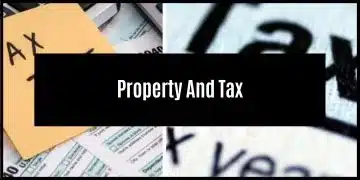The retirement annuity, pension fund and provident fund
When you speak to a financial advisor or join a new company, you might be either forced or encouraged to buy into a retirement product. As these products have lots of regulations and legal obligations, it might feel like you’re pouring money into a bottomless pit.
Don’t be discouraged, as this article will help clarify what the differences are between a retirement annuity, pension fund and provident fund. And let’s do this in simple language
Retirement products: an overview
Many people have issues with saving for retirement. Once the money is in their bank account, they spend it. To overcome terrible money habits, retirement products such as RAs, provident and pension funds were created to help us save for the long run.

When investing in the retirement products below , the money is placed in a ‘wrapper’. Any money that is placed into it will need to adhere to the rules of the product.
Retirement annuities
RAs are governed by regulation 28. The idea is that you put money into the policy and you only access it at retirement (55). Generally, funds are paid monthly, as most people don’t have a lump sum lying around. Many providers allow you to choose what funds you’re investing in.
Here are some highlights:
- Less than 75% can be invested in shares/stocks
- 30% or less can be taken offshore (with an additional 10% in Africa)
Retirement annuity policies
In some cases, you might get a policy retirement annuity – You sign a contract to pay an amount every month until retirement. If you default, you will need to pay severe penalties. These penalties might mean you lose all your profits or even some of your capital!
Pension funds
So, you’re starting a new job. You signed the contract and see on your payslip that you have a deduction for a pension fund. Pension funds are generally for employees of a company and are funded through monthly contributions. There are certain discounts on fees and investments when bulk buying, and thus employers will often force their employees to invest in these funds.
This fund is managed by trustees who decide what to invest in.
What happens when I resign?
If you resign or leave the company, you need to move your money away from the pension fund. You can move it to:
- your new employer’s pension fund
- a preservation fund
- a retirement annuity
You are also to cash out up to a third of the money. Taxes will be payable on all money withdrawn.
Provident funds
After the changes of the law on 1 March 2021, provident and pension funds are basically the same now. Previously, you could withdraw all the money from a provident fund but is not possible anymore.

Provident funds, like pension funds are generally available through employers who want to look out for their employees. When you leave, the same rules as pension funds apply.
Preservation funds
So, you leave your current employer and you need to move your money out of a pension fund. Preservation funds are designed for this. You can move your money into a preservation fund to keep your money growing tax-free.
In case something bad happens, you are allowed to make one partial/full withdrawal before you reach age 55. Once you’ve made the withdrawal, you have to wait until 55 to withdraw the money.
What happens when I retire?
For RAs and pension funds, you are able to withdraw up to 1/3 of the money in a cash lump sum. If the amount is less than R 247 500, you can withdraw everything. All withdrawals will be taxable!
The money that remains must be used to buy an annuity. You could either choose a living or a life annuity.
Living and life annuities
A living annuity is like a savings account. You put your money in there and are allowed to withdraw a certain amount every year.
A life annuity is like an insurance policy. It will pay you a fixed amount every month (escalating with inflation if negotiated beforehand) until the day you die. When you die, the money stops flowing.
Retirement products and tax
When you put money in, you will get tax back on your contributions. It is calculated on the greater of: 27.5% of total gross taxable income or 27.5% of total gross remuneration, having an annual ceiling of R350 000.
Retirement products are tax deferred . When you retire and withdraw the money through a lump sum or a monthly pension/annuity, you will need to pay income tax.
Fees
Because of overregulation to protect people from themselves and people in the financial sector, there are often large fees payable. Fees are generally calculated as a percentage of the entire fund value. This means that the more money you have in the fund, the more the fees.
A good measure would be to ask for EAC – effective annual cost. This should include everything – advisor fees, platform fees, fund management fees, etc.
Conclusion
Pension products assist people in saving – as most people spend money as it comes in. It was created to defer taxes until retirement.
Retirement annuities are regulated by regulation 28. Though you often can choose what you’re investing in, you are bound by the rules.
Employers use pension and provident funds to help employees save. When you move to another employer, you might need to move your money into another pension fund or into a preservation fund.
Extra reading
- 10x – What is a preservation fund?
-
Old Mutual – Pension Funds, Provident Funds & Retirement Annuities Explained
- Allan Gray – PART 5: What’s the difference between retirement products?



